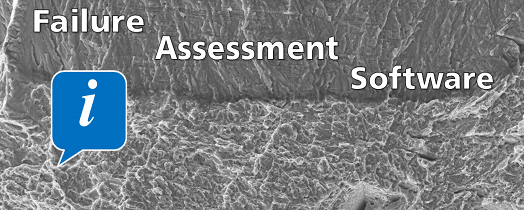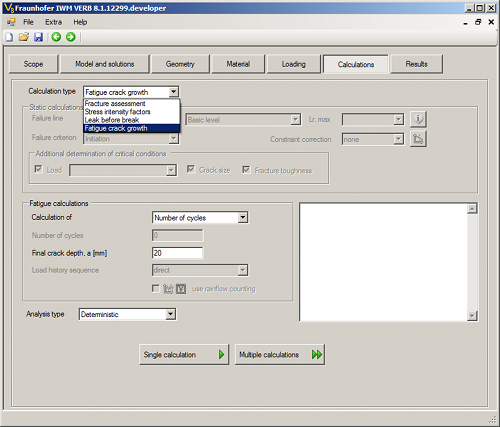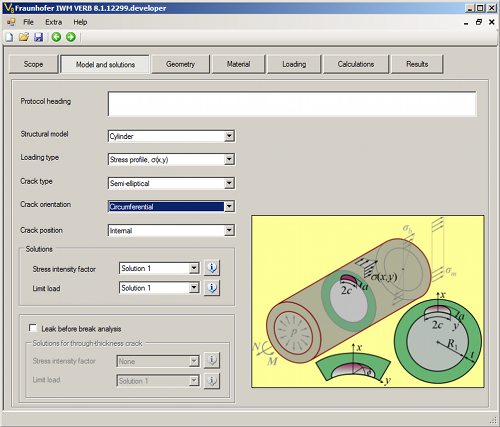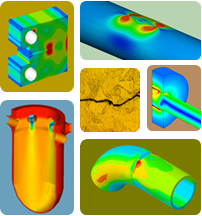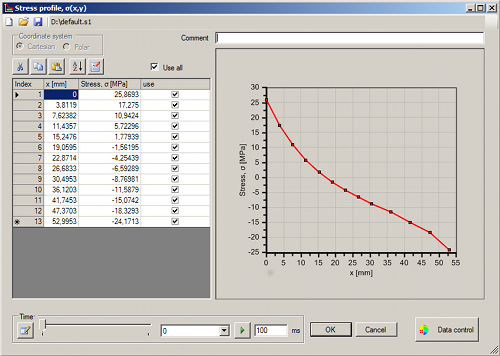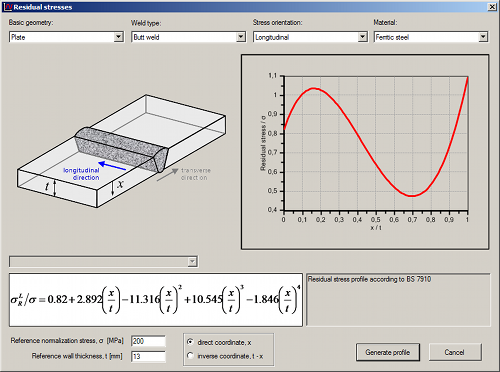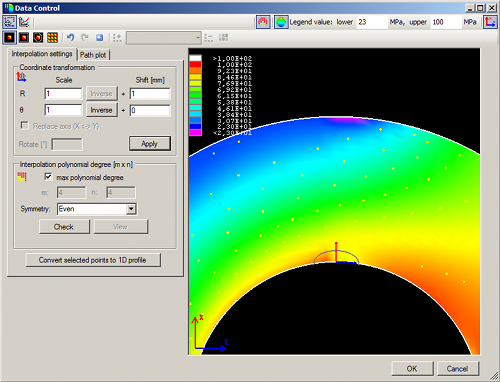Introduction
IWM VERB is a PC program for fracture assessment of components containing crack-like defects. The computational basis of the program consists of methods and solutions of elastic and elastic-plastic fracture mechanics, the assessment methodology follows internationally recognized guidelines and documents, such as SINTAP, R6, BS 7910, API 579, German FKM Guideline, FITNET. The application area mainly comprises metallic components subjected to static or cyclic loading, although non-metallic materials can also be considered provided that their behaviour can be described in terms of conventional fracture mechanics concepts.
The name VERB is an acronym of „Versagensbewertung von rissbehafteten Bauteilen" standing for “Failure Assessment of Cracked Components”. Since 1988, the program has continuously being developed at Fraunhofer Institute for Mechanics of Materials IWM, Freiburg.
Note, that VERB is a calculation tool that does not replace user’s expertise. If in doubt, the user should refer to appropriate guidelines or design rules approved by a specific branch of industry.
Jump to:
 Fraunhofer Institute for Mechanics of Materials IWM
Fraunhofer Institute for Mechanics of Materials IWM